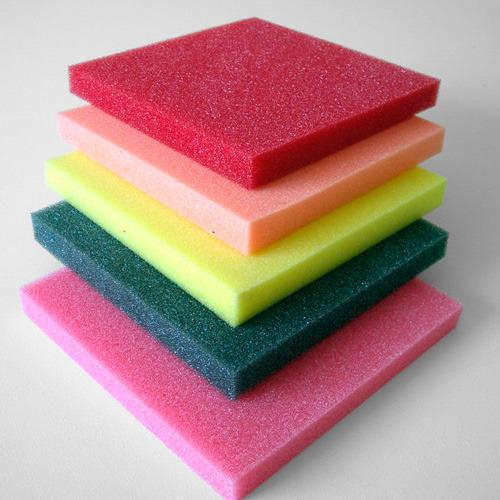The Environmental Truth on Polyurethane Foam

So many people seeking a wholly organic and environmentally friendly lifestyle automatically assume any material with a chemical sounding name will cause them harm. Yet that is a notion that is so inaccurate, it is almost laughable. According to the Polyurethane Foam Association, polyurethane is produced as a result of the reaction of two organic materials: polyol (a naturally occurring alcohol) and diisocyanate (groups of isocyanates from plant or animal matter), together with water.
When the reaction takes place bubbles form and the substance expands, almost like the process of baking a pound cake. Various measures of each ingredient or different methods of mixing will produce varied consistencies and densities of foam. Some forms are hard like plastic, others are extremely soft. Depending on the density and presence of elastomers, polyurethane foam is formed into everyday materials such as all manner of fabric coatings and synthetic fibers. The durability of the foam and ability to be impervious to moisture, translates into an excellent material for outsoles and midsoles of footwear. Low density and flexible foams are perfect for bedding and upholstery.
Rigid polyurethane foam that is so high in density it becomes a plastic, is used for casting structural parts for buildings. The small bezels in jewelry, watches and electronic instruments are made from more dense foam. Foam that is rigid and reasonably compact can be easily formed into specific shapes using molds. Therefore expanding foam is very popular in the construction industry for use as structural foam, particularly for a building facade. The vehicle industry makes use of polyurethane foam in the vehicle fascia and the protective ‘skin’ of the interior surfaces, such as the dashboard. Let’s also not forget how expanding foam insulation is used in a spray form and as a highly efficient insulating material in buildings and vehicles. Millions of dollars in energy costs are saved every year, but billions more may be saved by a wider use of spray foam insulation in residential and commercial applications.
Alright, so we know what polyurethane foam can be used for, but what about sustainability? Let us first address the insulation factor. By reducing the heating and cooling costs for every structure, in both residential and commercial buildings, permanent and modular greenhouse gases can be significantly diminished. Mining and transportation of fuel is reduced, as are all the activities related to energy consumption. As a moisture resistant material, polyurethane spray foam insulation also prevents mold and moisture damage to structures, thus reducing the unnecessary use of raw materials for repairs.
One of the largest misconceptions regarding expanding is in its manufacturing process. Since the end product is not an organic material, many believe the foam is created in an environmentally harmful manner. In truth, polyurethane foam is created through an exothermic reaction that requires very little energy or water. That means the polyol and the diisocyanate releases its own energy through the naturally occurring chemical reaction, negating the need for a further ‘push’ via mechanical means to produce the end product. This natural process also means there are no off-gasses from the cured foam.
